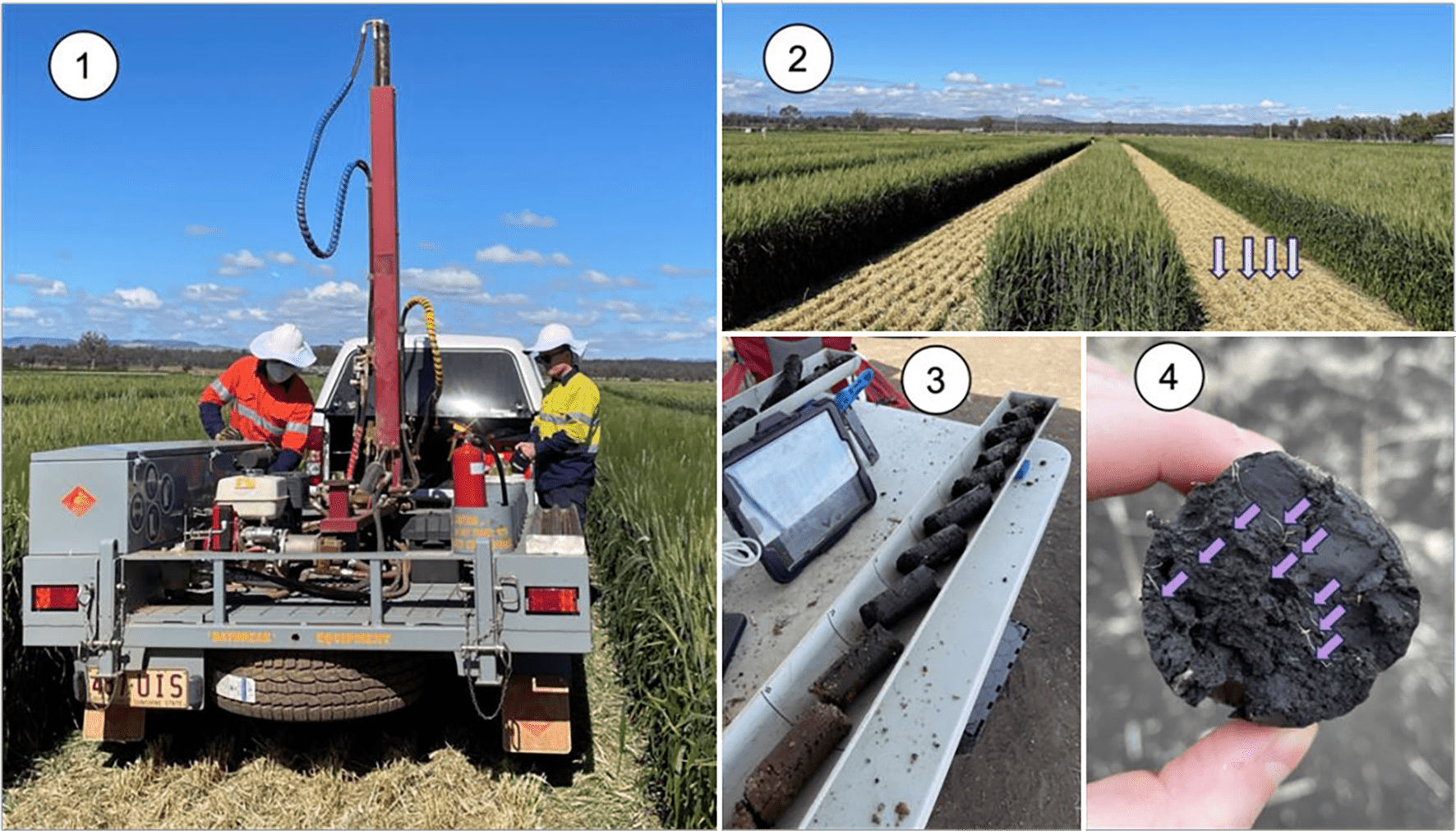

Developing elite wheat with improved root systems
April 11, 2023

One way the Crawford Fund supports and encourages the next generation of Australians in study, careers and volunteering in international agricultural research is through our highly sought after Student Awards, funded by our State and Territory Committees and made possible by organisations including ACIAR, international centres, Australian and overseas universities and NGOs.
Our 2023 awards are now open so check out the application process here.
The Crawford Fund student awards enable students to gain international agricultural research experience and expertise. With COVID-19 delays, some students managed ‘wraparound’ strategies to complete their research without the planned travel.
We would like to share the successful ‘wraparound’ experience of Ms Charlotte Rambla, then a PhD student at the Hickey Lab, QAAFI at University of Queensland. Charlotte’s PhD research was supported by the Grains Research and Development Corporation, and she went on to win a Borlaug Global Rust Initiative 2022 Jeannie Borlaug Laube Women in Triticale Award and is now a postdoctoral fellow using her skills at the Salk Institute for Biological Studies.
“Due to COVID-19 and international flight restrictions, I was unable to travel to the International Maize and Wheat Improvement Center (CIMMYT) in Mexico to conduct collaborative root research that leverages current activities funded by the International Wheat Yield Partnership (IWYP),” said Charlotte.
“However, we framed a new plan that still enabled me to gain experience in field-based root phenotyping in Australia and interaction with partners at CIMMYT. We conducted a field experiment in Queensland in collaboration with root phenotyping expert Dr Anton Wasson from CSIRO. We measured the root system by performing root coring for the newly intro-selection lines, which strengthened the results and outcomes of my PhD.”
According to Charlotte, breeding programs have focused on the improvement of above-ground traits through direct selection, while the crops “hidden-half” (roots) have been neglected. In recent years, research suggested that optimised plant root systems can improve water and nutrient acquisition with minimal metabolic cost, and therefore could improve crop yields under both favourable and adverse conditions.
“There is an urgent need to develop wheat cultivars adapted to marginal regions where conditions are extremely challenging. The underground component of the crop, the root system, is critical for accessing water and nutrient in the soil profile. The architecture of the root system can greatly impact crop performance and yield stability during harsh growing seasons,” said Charlotte.
She explained, modern crop improvement programs struggle to incorporate selection for root traits, largely due to the challenges associated with phenotyping the root system, the complexity to underline genes controlling root architecture, and the inability to assess the value of traits in specific environment types. However, the development of tools such as high-throughput phenotyping systems and linked molecular markers that pre- breeders and breeders can exploit are enhancing the prospects for breeding improved root systems.
“My research aimed to investigate improving root system architecture (RSA) in breeding programs as a target to increase the drought tolerance of wheat cultivars,” said Charlotte.
In this project, 44 wheat intro-selection lines and recurrent parents were phenotyped for root and shoot traits in a field experiment at Gatton in Queensland which aimed to: 1) validate changes to root distribution, 2) gain new insights into the relationships between above- and below-ground traits, and 3) root trait relationships from in a retrospective lab to field.
The 2021 field trial enabled a thorough evaluation of root performance under field conditions. With this data, we will perform analyses to investigate the link between root coring data and the canopy temperature measured at different growth stages using an unmanned aerial vehicle (UAV) fitted with a multispectral camera. This data will help determine the value of different root systems and their associations with canopy proxies that could facilitate rapid root trait screening (using UAVs) in breeding programs in Australia.
“The narrow deep root traits are expected to be particularly advantageous for Queensland environments due to the deep and high water-holding capacity of soils across the region,” said Charlotte.
The project will deliver the following outcomes in the future:
- improved knowledge of the value of different root traits and their associations with yield under drought,
- new phenotyping approaches for rapid screening and selection of desirable root systems in wheat improvement programs, and
- enabling a rapid transfer of knowledge and uptake of specific root traits in their spring wheat breeding programs targeting small holder farmers in Asia and Africa.
“I want to thank the Crawford Fund and I would like to acknowledge my supervisors Prof Lee Hickey and Dr Samir Alahmad for their support and participation in this project. Furthermore, I want to acknowledge Dr Anton Wasson and Jai Perroux for their massive help in performing root coring and for the data analysis of root counts. I would like also to acknowledge the tremendous efforts by Yichen Kang and Sarah Van Der Meer during the process of root coring and counting,” she concluded.




